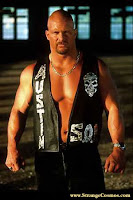Preparing for a trade show can be a very scary and frustrating time, especially if it is your first time. The amount of worrying and anxiety that goes along with planning a trade show can sometimes be as daunting as planning a wedding. You may ask yourself questions like: What do we take for our trade show display and how do we present it?
The first thing you need to do is contact the trade show vendors and organizers. Find out the specifics, like how big of a space you will have to showcase your business. Before you start ordering attractions make sure that your space will be large enough to accommodate them. This will save you a ton of headaches later.
Once you have all the necessary information regarding how much space you will have to work with you can then move on to the brainstorming phase. Try to think of attractions that will showcase your business and also draw people into your booth or over to your table. Put yourself in the attendee’s shoes, what would you like to see?
Here are a few great ideas to help you get ready.
1) If your trade show display table does not have a table cloth, get one! Make sure you choose a color scheme that is eye catching but also compliments your company logo or color scheme. If your table does come with a table cloth, bring something anyway. Something as simple as a table runner can make you stand out from the crowd and be the difference between a successful trade show and an unsuccessful one.
2) If you have the space make/buy a presentation board. Have this board showcase the benefits your company can provide potential customers with. Remember BE CREATIVE. Some blown up Microsoft excel spreadsheet is not going to draw people in, think form the attendees perspective. What would attract you to a board? Pictures, bright colors, and creativity. Keep all of these in mind.
3) Look into purchasing or renting some trade show attractions or giveaways. Nothing draws people in like the chance to win something. If your budget allows it, why not look into renting or purchasing some attractions to have at your booth? Look into having something that will set you apart from your competition!
4) Arrange your trade show display table in levels. Put the larger items at the rear, shorter items in front of those, and even shorter items in front of those. No one will be able to see smaller items if they are behind larger ones. Don’t make a mistake like this, you have a very limited amount of time and you want everyone that stops by to be able to see EVERYTHING you have to offer.
About the Author
This week's guest post is from Shannon Martin who is a writer for TradeShowMarketing.Com, she lives in Palm Coast FL.













